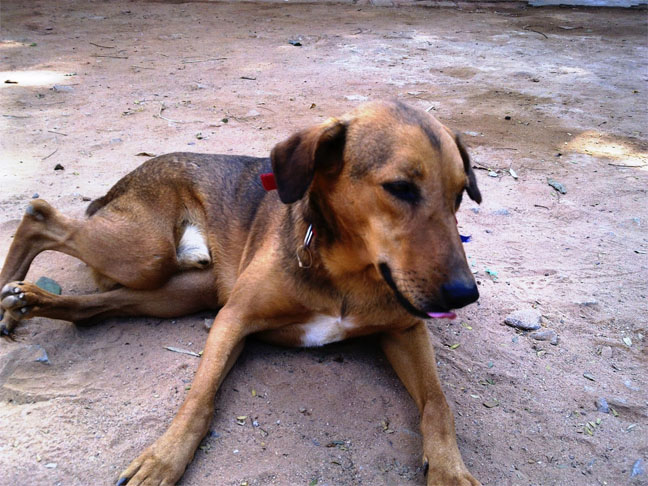Continued from
last week
Last week, we had reached the point where, after cleans-ing the wound and removing dead tissue (debriding), a decision must be as to whether the wound will be closed, or managed as an open wound. Certain important considerations must be factored into the final decision. They are:
(1) Do we have enough skin available to effect an adequate surgical closure? In other words, if there has been great skin loss, we may not be able to bring the wound edges together to ensure a successful and durable closure of the wound. Sometimes the wound, which has been sutured shut, soon bursts open because of the tension placed on the closed wound.
 (2) How much infection has gotten deep into the wound? Is the level of contamination so great that we really cannot effect adequate cleansing?
(2) How much infection has gotten deep into the wound? Is the level of contamination so great that we really cannot effect adequate cleansing?
(3) If the wound is left open, can we carry out an optimal day-to-day management. Can we visit the vet daily? Do we have the time or the expertise or the helping hands at home to do the necessary cleansing, debriding, bandaging (if appropriate), etc?
Having taken all things into consideration, let’s say, for the sake of our discussion, that the decision is to close the wound. There are now several options at the vet’s disposal. Note that I have said ‘vet,’ not layman, not quack. Only if there is no vet available and your action is absolutely necessary to ensure the continued viability of tissue, or, for that matter, if the dog’s life depends on your intervention, must you even consider attempting any surgical procedure.
Primary closure
This is the simplest method of wound management and really should only be used in ideal situations to avoid wound complications. A wound may be sutured closed with various types of ‘threads’ (eg, cat gut, nylon, special wire, acrylic materials, etc) or it may be stapled shut.
 If it is a skin wound, one may use a non-absorbable material, since the sutures will be removed a week or so later. If there are deep gaps in the underlying muscle tissue, then this ‘dead space’ cavity must be sutured closed as best as possible with absorbable material. You see now how complicated this is becoming, and how really only trained personnel with the appropriate tools can carry out the stitching.
If it is a skin wound, one may use a non-absorbable material, since the sutures will be removed a week or so later. If there are deep gaps in the underlying muscle tissue, then this ‘dead space’ cavity must be sutured closed as best as possible with absorbable material. You see now how complicated this is becoming, and how really only trained personnel with the appropriate tools can carry out the stitching.
So, in the case of a primary closure, the objective is to close the individual layers, so that gaps do not remain which can harbour germs, debris, dead tissue and pus or serum discharge. The types of suture pattern will depend on the size, depth, the amount of tissue loss and the location of the wound.
Delayed primary closure
Primary closure may not be appropriate for a grossly contaminated or infected wound. If closure is a suitable goal, it may be delayed until the contamination or infection is under control. The wound can be managed short-term as an open wound until it appears healthy. At that time, the wound can be safely closed with minimal risk of complications. The time between initial debridement and final closure will vary according to the degree of contamination or infection. Minimally contaminated wounds may be closed after 24-72 hours. A longer period may be required for heavily infected wounds.
Secondary closure
If the vet decides to close the wound more than five days after the initial damage, we can speak of secondary closure. This implies that the healing process is well on the way, and that new tissue (granulation) is being formed. Clean wounds that have been properly debrided usually heal without complication. So, if the vet decides to close the wound after some time has elapsed, his/her decision would be based on some rational reason(s) and an objective assessment of the situation, eg, the possibility of renewed contamination.
Next week, we’ll continue with the management of the open wound.
Please implement disease preventative measures (vaccinations, routine dewormings, monthly anti-heartworm medication, etc) and adopt-a-pet from the GSPCA’s Animal Clinic and Shelter at Robb Street and Orange Walk, if you have the wherewithal to care well for the animals. Do not stray your unwanted pets, take them to the GSPCA’s Clinic and Shelter instead. If you do not wish your pet to have puppies or kittens, you may exploit the GSPCA’s free spay and neutering programme. If you see anyone being cruel to an animal, or if you need any technical information, please get in touch with the Clinic and Shelter by calling 226-4237.










